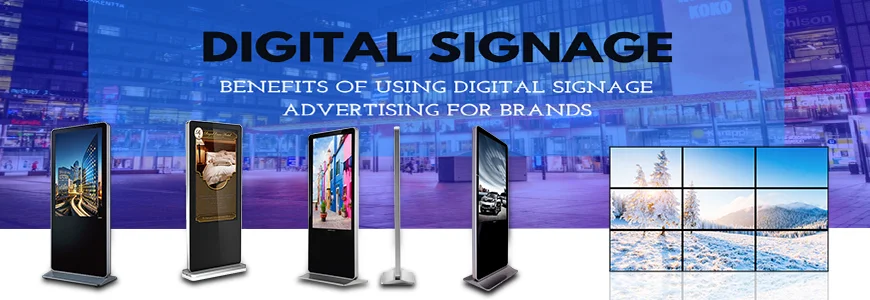Types of Digital Signage Displays and Their Best Use Cases
If you’re trying to choose the right digital signage for your business, the number of options available can be overwhelming. From LED and LCD to touch and non-touch screens, knowing which one to go for isn’t always straightforward. Whether you want a display that grabs attention in a bustling mall or offers smooth interaction in a hospital lobby, making the right decision matters, both for the experience you provide and the money you spend.
Let’s break down the different types of digital signage displays and where each one fits best.
Touch vs. Non-Touch Digital Signage
Touch Displays
Touch-enabled signage is interactive and encourages users to engage directly with the screen. It’s perfect for spaces where users need information quickly, like directories in shopping centres, digital menus at quick-service restaurants, or self-check-in kiosks at airports.
Touch Displays
Touch-enabled signage is interactive and encourages users to engage directly with the screen. It’s perfect for spaces where users need information quickly, like directories in shopping centres, digital menus at quick-service restaurants, or self-check-in kiosks at airports.
Best use cases:
- Self-service counters.
- Hotel lobbies.
- Interactive product catalogues.
Non-Touch Displays
These displays are meant solely for content display without user involvement or interaction. Ideal for broadcasting promotional videos, announcements, or important information, non-touch digital signage works well where passive viewing is preferred.
Best use cases:
- Waiting rooms.
- Retail window displays.
- Office reception areas.
At, Purplewave Infocom, you can get both types of displays with custom configuration options, depending on the environment and content goals.
Indoor vs. Outdoor Digital Signage
Indoor Displays
Designed for temperature-controlled environments, indoor digital signage screens are sleek and often wall-mounted. They’re not built to withstand weather but are perfect for spaces like malls, hotels, schools, or gyms.
Best use cases:
- In-store promotions.
- Meeting room boards.
- Menu displays inside restaurants.
Outdoor Displays
Built for durability, outdoor signage is weather-resistant and high in brightness so that visibility isn’t compromised even under direct sunlight. They often come with vandal-proof features too.
Best use cases:
- Petrol stations.
- Transit shelters.
- Outdoor advertising.
When selecting between the two, think about exposure to elements and how important screen brightness and protection will be. Purplewave Infocom consultants can help guide you through this process with location-specific advice and installation support.
LED vs. LCD Digital Signage
LED Displays
Known for their brilliant brightness and colour contrast, LED screens are ideal for large-scale signage and areas with a lot of ambient light. They’re often used in stadiums, concerts, or for big-format outdoor advertising.
Best use cases:
- Stadium scoreboards.
- Outdoor billboards.
- Digital hoardings on highways.
LCD Displays
LCD signage offers crisp image quality and works well in smaller or more intimate settings. While they aren’t as bright as LEDs, they’re cost-effective and energy-efficient, making them a popular choice for indoor environments.
Best use cases:
- Supermarket aisles.
- Retail displays.
- Internal office communications.
Final Thoughts
Choosing the right digital signage means thinking beyond the screen; it’s about context, environment, and how you want people to interact with your content. Whether it’s an interactive kiosk or a weather-resistant outdoor board, the right display makes all the difference.
If you’re unsure where to begin, reach out to us. Our experience in designing and deploying digital signage systems across industries can help you make an informed and practical choice.
